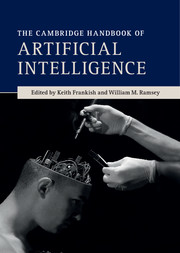6 - Dynamical systems and embedded cognition
Published online by Cambridge University Press: 05 July 2014
Summary
Introduction
The conceptual frameworks that we bring to our study of cognition can have a tremendous impact on the nature of that study. They provide a set of filters through which we view the world, influencing our choice of phenomena to study, the language in which we describe these phenomena, the questions we ask about them, and our interpretations of the answers we receive. For much of the last fifty years, thinking about thinking has been dominated by the computational framework, the idea that systems are intelligent to the extent that they can encode knowledge in symbolic representations which are then algorithmically manipulated so as to produce solutions to the problems that these systems encounter (see Chapter 4 of this volume). More recently, the connectionist framework forced an important refinement of the computational framework, in which representation and computation could be distributed across a large number of loosely neuron-like units (see Chapter 5).
Beginning around the mid 1980s, just as the popularity of connectionism was rising, another conceptual framework appeared (or, as in the case of connectionism, reappeared) on the scene. This framework, which, for want of a catchier label, I will call the situated, embodied, dynamical (SED) framework, focuses on concrete action and emphasizes the way in which an agent’s behavior arises from the dynamical interaction between its brain, its body, and its environment. In this chapter, I will attempt to trace some of the history of the individual intellectual threads of situated activity, embodiment, and dynamics that underlie the SED approach. I will particularly focus on the years 1985–1995. Although there were important precursors to the SED approach (some of which I will briefly mention), and work in this area has grown rapidly in recent years, many of the pivotal ideas were first given their modern form during this ten-year period.
Keywords
- Type
- Chapter
- Information
- The Cambridge Handbook of Artificial Intelligence , pp. 128 - 148Publisher: Cambridge University PressPrint publication year: 2014
References
- 28
- Cited by

